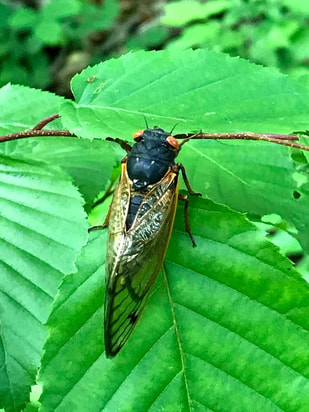|
The folks of the YouTube channel brusspup demonstrate the “Crazy Nuts” illusion originally created by magician Jerry Andrus. This illusion exploits the way our brain constructs perception of depth and volume using cues from lines, lighted and shaded surfaces, and knowledge of the geometry of known objects. The effect is similar to that shown in the photograph below of a section of a building at the Glenstone Museum in Potomac, Maryland. The photograph shows two walls joining at a midline which is away from the observer with a section of blue sky visible on top. Viewed this way, the illumination seems to come from the left. Thus, the right wall is more in the light, and the left wall is more in the shadow due to the angle. However, the photograph can also be seen as the edge of a tower with a blue top where the two walls join at a midline which protrudes towards the observer. Viewed this way, the illumination seems to come from the right. The Glenstone Museum photograph belongs to the author and can only be used with permission.
0 Comments
Mark Rober has been glitter-bombing people who steal packages from the front porch of people houses. In the video below he takes it to the next level by glitter-bombing phone scammers. The sad thing is that these scammers end up stealing money mostly from older folks who are too trusting and not technologically savvy. Watch the video and share it with any person who you think may be a potential target of these scams.  Inosculation Inosculation I saw a surprising photograph on the internet that I am including in this post. The photograph shows a large tree on the right that is connected at two sites by lateral branches with a smaller tree on the left that lacks a link to the ground. The tree on the left doesn’t have any roots, yet it seems to be alive (it has leaves) because it is presumably maintained by the tree on the right. This phenomenon where a tree forms a connection with another is called inosculation. This happens when parts of trees grow in contact with each other and the abrasion produced overtime by the movement of one part against the other due to, for example, the wind blowing, wears out the outer layer of bark. This puts the inner cambium layers (where tree growth takes place) in contact with each other. These layers will fuse and the bark will reform around them resulting in a connection. In essence inosculation is a type of grafting. The resulting trees in nature are called “marriage trees” or “husband and wife” trees. Inosculation is used in the art of tree shaping, which is also known as tree sculpture, arborsculpture, ornamental grafting, or pleaching. This is the art of making trees grow in unusual shapes, which requires a lot of patience, time, and work. In the United States one of the most notable practitioners of this art was Axel Erlandson who during his lifetime grew several dozen trees, which he called “circus trees”, into amazing shapes. When I visited the American Visionary Art Museum (AVAM) in Baltimore, Maryland, I got to photograph the remains of one of these trees called “The Telephone Booth Tree”. The AVAM photographs belong to the author and can only be used with permission. I have not been able to figure out who took the photograph of the large tree propping up the smaller tree or if it is in the public domain. If this photograph belongs to you, please let me know, and I will follow your instructions.  Brood X Cicada Brood X Cicada After 17 years of living underground, the cicadas from Brood X emerged in areas of the US spanning 15 states and the District of Columbia. Brood X is the largest cicada brood with as many as 1.5 million cicadas emerging per acre of land, which puts its total population into the trillions of insects. While all Brood X cicadas will probably look the same to us, Brood X is composed of three species of cicadas, Magicicada septendecim, Magicicada cassinii, and Magicicada septendecula. In cicadas, only the males sing, and the males from these three species each have a distinctive song that will only attract the females from their own species. Thus when you hear a large amount of cicadas singing, the noise is a mixture of three different songs. The cicadas make their song with a specialized stiff ribbed organ called the tymbal, which is located just next to the site where the wings are attached to the body. The ribs of the tymbal are caused to buckle in sequence by the action of muscles in the insect’s body, and every time one of the ribs buckles it produces a clicking noise. When the clicking noises of the tymbal are produced at a high frequency, it becomes a buzz which is amplified by abdominal air sacks increasing the intensity of the sound. The song of the cicadas can be really loud, approaching the 100 decibel range, and can be heard from a mile away. Because of this, cicadas have to protect their ears from their own sound! Cicadas hear through two large eardrum-like membranes called “tympana” which are connected to the brain auditory centers through a tendon. When the cicada sings, the tendons retracts creasing the tympana to prevent it from being damaged by the sound. In the video below, you can hear the chorus of cicada sounds made by Brood X at the Seneca Creek State Park in Maryland. The photograph belongs to the author and can only be used with permission. |
Details
Categories
All
Archives
June 2024
|

 RSS Feed
RSS Feed